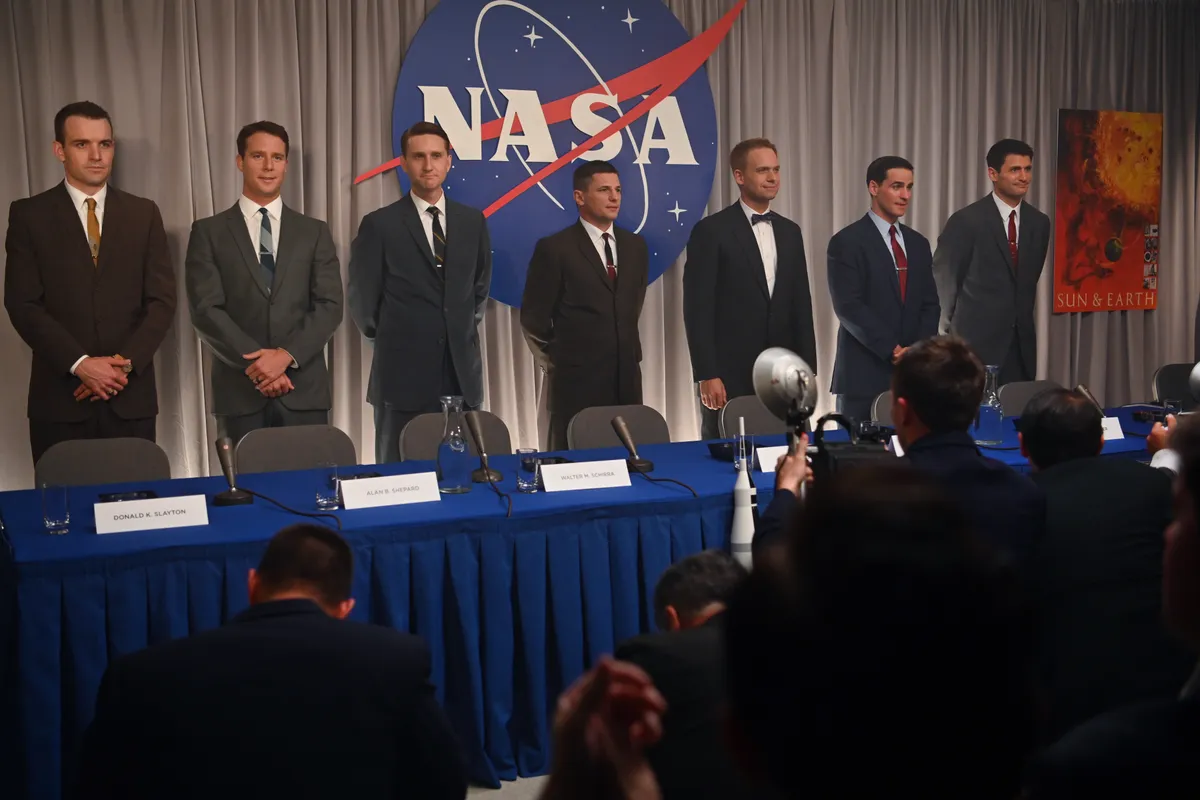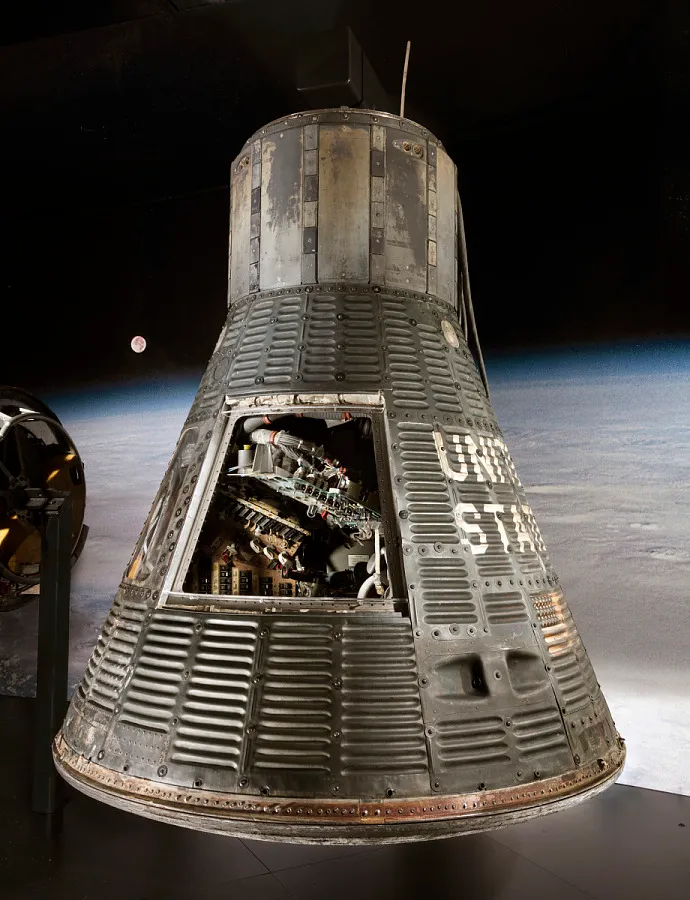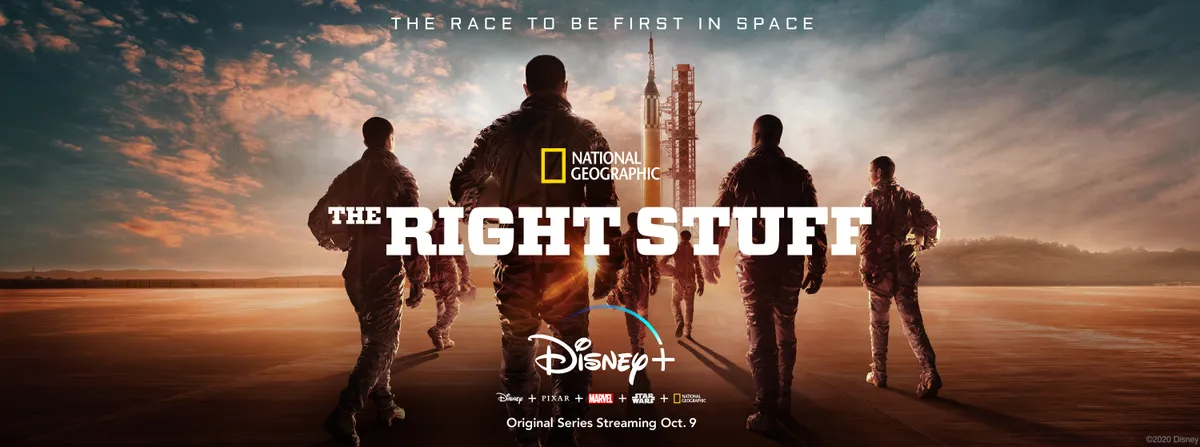Blasting off this October is The Right Stuff, a new eight-episode series from National Geographic and Disney+.
Based on a book of the same name by Tom Wolfe (previously made into a 1983 film), the series chronicles the story of NASA’s first astronaut class, the Mercury Seven.
To ensure the series was as accurate as possible, the producers brought on board technical consultant Robert Yowell – a spaceflight expert with 30 years of experience.
We spoke to him about his work on the series.

How did you help bring The Right Stuff to life?
The series goes into much deeper technical insights than the film ever did.
You're going to see the Mercury Control Center depicted in detail for the first time.
For Project Mercury, the control centre was located in Florida as opposed to Houston.
That control centre in the early 1960s was quite primitive by today's standards.
Also, we actually show Alan Shepard’s flight in the show [the first US flight into space].
The first spacecraft that was flown by Shepard did not have the same large pilot’s window that Gus Grissom and the following astronauts used – he had a periscope as his primary view of Earth.
During the flight there was an anomaly – you’ll see it in that episode – I helped with the description and the overall look of that scene by working with the CGI folks, the director and even the actor on that one.
How accurate is the series?
I think it's tremendously accurate.
The film is great but isn't 100 per cent accurate in some ways.
What we're doing here in this series is taking it to a much higher level of authenticity.
With today's CGI, we're able to do things that they couldn't do in 1983 for the film.
I think because of what we're focusing on the viewers are going to see some fantastic depictions of detail that they've never before been shown, at least in a dramatic sense.
Your background is in more modern spacecraft. Was there anything that shocked you looking back over these historical flights?
How primitive the technology was at the time, and the incredible fortune that we had many successes given that fact.
As an example, the flight controllers, they had so little insight into what was happening on the vehicle – they literally relied on the voice of the astronaut to convey what was going on.
I worked on the Space Shuttle, where we had tens of thousands of individual data inputs to look at in any given second.
I believe the Mercury capsule only had about a hundred or so.
Many of the remote sites around the world that were supporting Mercury, had no ability to talk to Florida.
They had to teletype – literally sending little telegrams back to Florida to convey the information that the capsule had just passed over Nigeria, for instance.

The Mercury capsules look quite rickety. Were they as fragile as they look?
Yes. They were. If you have the opportunity in the future to see one, take a look inside and look at all the wire bundles behind the control panel just all over the place.
It was not this perfectly streamlined, clean-as-a-whistle capsule like the SpaceX Crew Dragon or Boeing Starliner.
It was designed to keep later on to keep an astronaut alive in space for one day. That's it.
For Alan Shepard, it just had to keep him alive for 15 minutes.
It certainly was crude but it did its job.
How do they measure up against modern capsules?
It would be as if you were comparing a 1960 Triumph Spitfire to a 2020 Aston Martin.
The amount of computing power onboard the SpaceX Dragon is remarkable – it can perform practically autonomously for an entire orbital mission.
That simply would not have been possible with a Mercury capsule.
And the Mercury capsule had a preprogrammed trajectory, at least for sub-orbital missions.
You were just riding on a rollercoaster rail for 15 minutes. You didn’t have much capability to move outside of that.
There’s been a recent run of astronaut films and TV series. What’s sparked the interest?
I think a lot of it can be attributed to the vast private enterprises now going on between Jeff Bezos, Elon Musk and Richard Branson.
It’s bringing spaceflight closer to the grasp of everyday people.
What Richard Branson is doing with Virgin Galactic is a modern way of reproducing the suborbital flight of Alan Shepard and the Crew Dragon mission earlier this year was a recreation of John Glenn’s first orbital flight.
It gives us a real pause to look back and marvel how they started with a blank sheet of paper, and how far we’ve come in terms of technology.

You can listen to our full interview with Robert Yowell on our special Radio Astronomy podcast. Listen here on Acast or YouTube.
You can watch The Right Stuff now over on Disney+. Subscriptions cost £5.99 a month, or £59.00 for the year.
